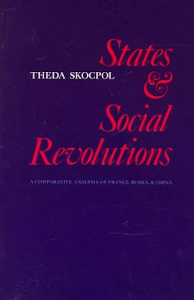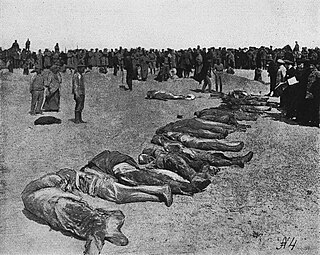Related Research Articles

The French Revolution was a period of social and political upheaval in France and its colonies beginning in 1789 and ending in 1799. The Revolution overthrew the monarchy; established a republic; catalyzed violent periods of political turmoil; and finally culminated in a dictatorship under Napoleon, who brought many of the revolution's principles to areas he conquered in Western Europe and beyond. Inspired by liberal and radical ideas such as equality before the law, the Revolution influenced the decline of absolute monarchies while replacing them with republics and liberal democracies.
Republicanism is a representative form of government organization. It is a political ideology centered on citizenship in a state organized as a republic. Historically, it ranges from the rule of a representative minority or oligarchy to popular sovereignty. It has had different definitions and interpretations which vary significantly based on historical context and methodological approach.

In political science, a revolution is a fundamental and relatively sudden change in political power and political organization which occurs when the population revolts against the government, typically due to perceived oppression or political incompetence. In book V of the Politics, the Ancient Greek philosopher Aristotle described two types of political revolution:
- Complete change from one constitution to another
- Modification of an existing constitution.

Totalitarianism is a term for a political system or form of government that prohibits opposition parties, restricts individual opposition to the state and its claims, and exercises an extremely high degree of control over public and private life. It is regarded as the most extreme and complete form of authoritarianism. In totalitarian states, political power has often been held by autocrats who employ all-encompassing campaigns in which propaganda is broadcast by state-controlled mass media.

The Age of Enlightenment was an intellectual and philosophical movement that dominated the world of ideas in Europe during the 17th to 19th centuries.

Alexis Charles Henri Clérel, comte de Tocqueville, colloquially known as Tocqueville, was a French aristocrat, diplomat, political scientist, and historian. He is best known for his works Democracy in America and The Old Regime and the Revolution (1856). In both, he analysed the improved living standards and social conditions of individuals as well as their relationship to the market and state in Western societies. Democracy in America was published after Tocqueville's travels in the United States and is today considered an early work of sociology and political science.
A warlord is a leader able to exercise military, economic, and political control over a subnational territory within a sovereign state due to their ability to mobilize loyal armed forces. These armed forces, usually considered militias, are loyal to the warlord rather than to the general government. Warlords have existed throughout much of history, albeit in a variety of different capacities within the political, economic, and social structure of states or ungoverned territories.

Louis Pierre Manuel was a French writer and political figure of the Revolution.

The historiography of the French Revolution stretches back over two hundred years, as commentators and historians have sought to answer questions regarding the origins of the Revolution, and its meaning and effects. By the year 2000, many historians were saying that the field of the French Revolution was in intellectual disarray. The old model or paradigm focusing on class conflict has been challenged but no new explanatory model had gained widespread support. Nevertheless, there persists a very widespread agreement to the effect that the French Revolution was the watershed between the premodern and modern eras of Western history.

Rebellion, uprising, or insurrection is a refusal of obedience or order. It refers to the open resistance against the orders of an established authority.

The Rebel is a 1951 book-length essay by Albert Camus, which treats both the metaphysical and the historical development of rebellion and revolution in societies, especially Western Europe.
The Conservative Revolution, also known as the German neo-conservative movement or new nationalism, was a German national-conservative movement prominent during the Weimar Republic in the years between World War I and Nazi Germany (1918–1933).

Barrington Moore Jr. was an American political sociologist, and the son of forester Barrington Moore.

States and Social Revolutions: A Comparative Analysis of France, Russia and China is a 1979 book by political scientist and sociologist Theda Skocpol, published by Cambridge University Press, which explains the causes of revolutions through the structural functionalism sociological paradigm comparative historical analysis of the French Revolution of 1789 through the early 19th century, the Russian Revolution of 1917 through the 1930s and the Chinese Revolution of 1911 through the Cultural Revolution in the 1960s. Skocpol argues that these three cases, despite being spread over a century and a half, are similar in the sense that all three were social revolutions.
What constitutes a definition of fascism and fascist governments has been a complicated and highly disputed subject concerning the exact nature of fascism and its core tenets debated amongst historians, political scientists, and other scholars since Benito Mussolini first used the term in 1915.

Violence and the Sacred is a 1972 book about the sacred by the French critic René Girard, in which the author explores the ritual role of sacrifice. The book received both positive reviews, which praised Girard's theory of the sacred, and more mixed assessments. Some commentators have seen the book as a work that expresses or points toward a Christian religious perspective. However, the book has also been seen as "atheistic" or hostile to religion. Violence and the Sacred became highly influential, in anthropology, literary criticism, and even Christology. It has been compared to the classicist Walter Burkert's Homo Necans (1972). Girard further developed its ideas in a subsequent book, Things Hidden Since the Foundation of the World (1978).

Terror is a policy of political repression and violence intended to subdue political opposition. The term was first used for the Reign of Terror during the French Revolution.

Symbolism in the French Revolution was a device to distinguish and celebrate the main features of the French Revolution and ensure public identification and support. In order to effectively illustrate the differences between the new Republic and the old regime, the leaders needed to implement a new set of symbols to be celebrated instead of the old religious and monarchical symbolism. To this end, symbols were borrowed from historic cultures and redefined, while those of the old regime were either destroyed or reattributed acceptable characteristics. New symbols and styles were put in place to separate the new, Republican country from the monarchy of the past. These new and revised symbols were used to instill in the public a new sense of tradition and reverence for the Enlightenment and the Republic.

A counter-revolutionary or an anti-revolutionary is anyone who opposes a revolution, particularly one who acts after a revolution in order to try to overturn it or reverse its course, in full or in part. The adjective, "counter-revolutionary", pertains to movements that would restore the state of affairs, or the principles, that prevailed during a prerevolutionary era.

Permanent revolution is the strategy of a revolutionary class pursuing its own interests independently and without compromise or alliance with opposing sections of society. As a term within Marxist theory, it was first coined by Karl Marx and Friedrich Engels by at least 1850, but since then it has been used to refer to different concepts by different theorists, most notably Leon Trotsky.
References
- 1 2 3 Goldhammer, Jesse, 1967- (2005). The headless republic : sacrificial violence in modern French thought. Cornell University Press. p. 1. ISBN 0-8014-4150-1. OCLC 56733117.CS1 maint: multiple names: authors list (link)
- 1 2 Ptacek, Melissa (2006-12-01). "Sacrificing sacrifice". Theory and Society. 35 (5–6): 587–600. doi:10.1007/s11186-006-9019-4. ISSN 0304-2421.
- 1 2 Martel, James R. (December 2006). "Can We Do Away with Sacrifice?". Political Theory. 34 (6): 814–820. doi:10.1177/0090591706292838. ISSN 0090-5917.
- ↑ Safran, William (Apr 2006). "The headless republic: sacrificial violence in modern French thought". Choice; Middletown. 43 (8).
| This article about a book on political science is a stub. You can help Wikipedia by expanding it. |